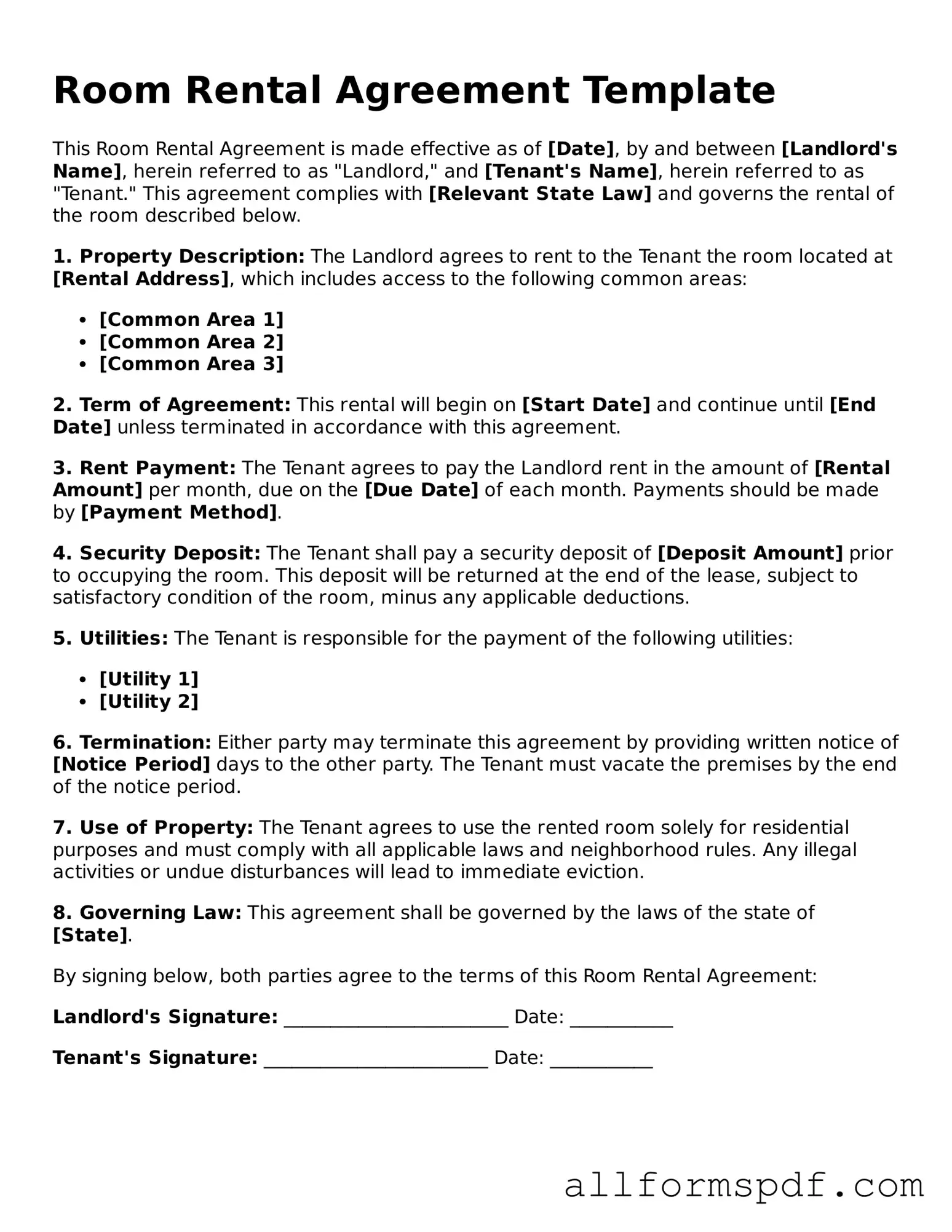Filling out a Room Rental Agreement form can seem straightforward, but many people make common mistakes that can lead to misunderstandings or disputes later on. One frequent error is failing to provide accurate personal information. This includes names, addresses, and contact numbers. Incorrect details can complicate communication and create issues if legal action is necessary.
Another mistake is overlooking the rental terms. People often skim through the agreement and miss critical details, such as the rental amount, payment due dates, and late fees. It’s essential to read each section carefully to understand your obligations and avoid unexpected costs.
Some individuals neglect to specify the duration of the rental. Not stating the start and end dates can lead to confusion about when the agreement begins and when it ends. Always ensure that the term of the rental is clearly defined to prevent any ambiguity.
Additionally, many renters fail to note the security deposit terms. This includes the amount, conditions for its return, and any deductions that may apply. Without this information, you might be surprised by what the landlord decides to keep when you move out.
Another common oversight is not understanding the maintenance responsibilities. The agreement should outline who is responsible for repairs and upkeep. If this is not clearly stated, disputes can arise over who should handle issues like plumbing problems or broken appliances.
Lastly, people often forget to sign and date the agreement. A Room Rental Agreement is not legally binding until both parties have signed it. Ensure that you and the landlord have completed this step to protect your rights and responsibilities under the agreement.
